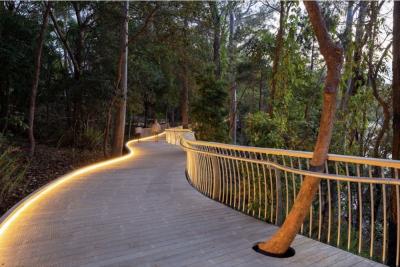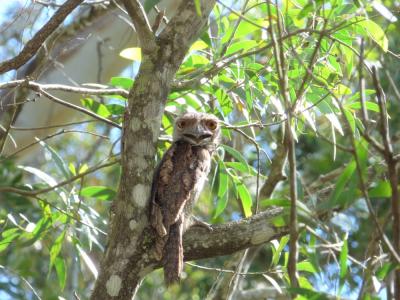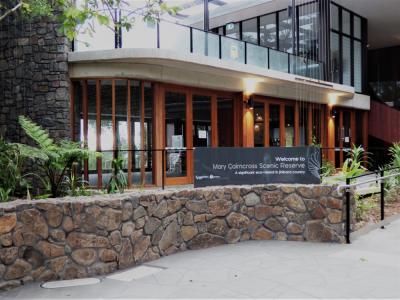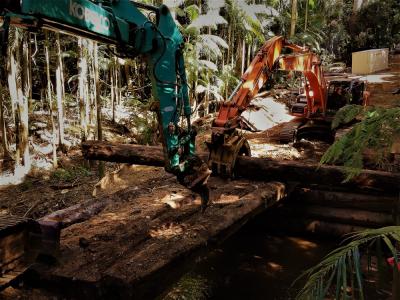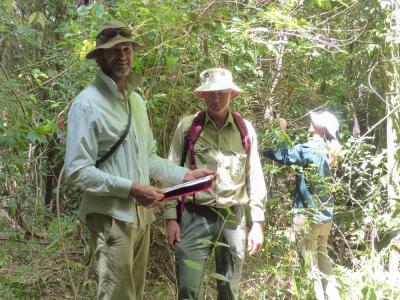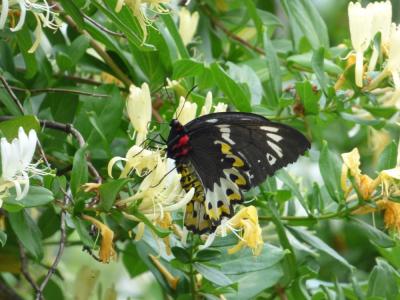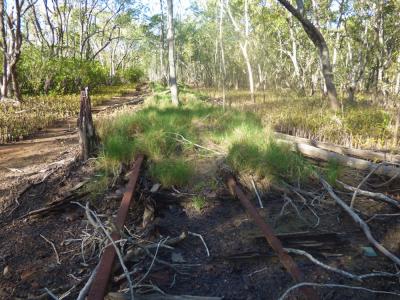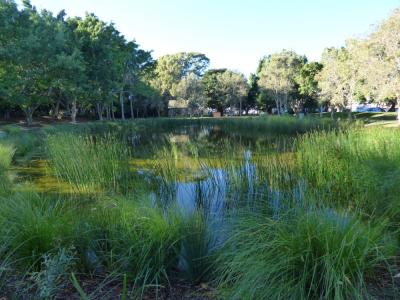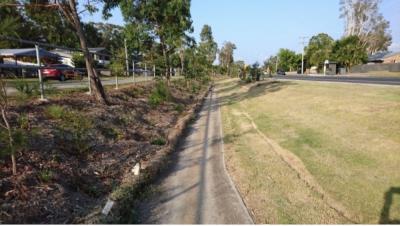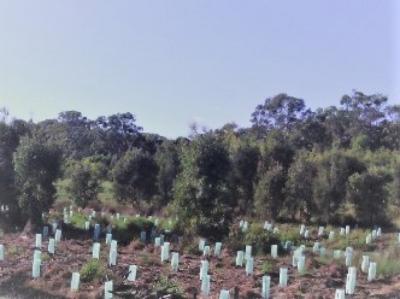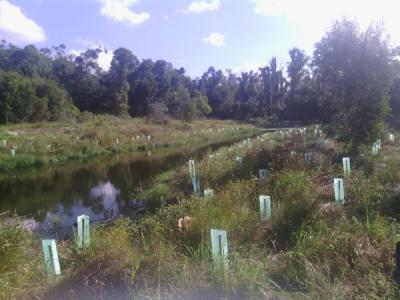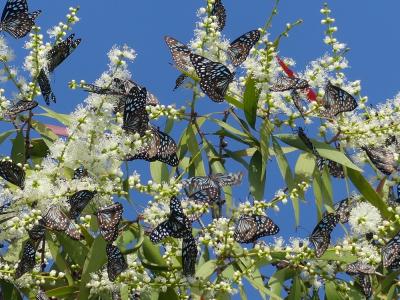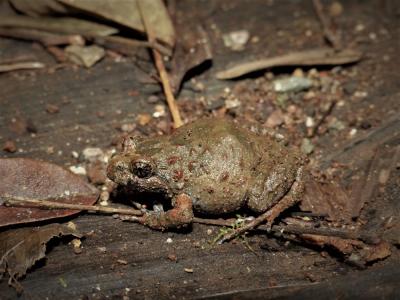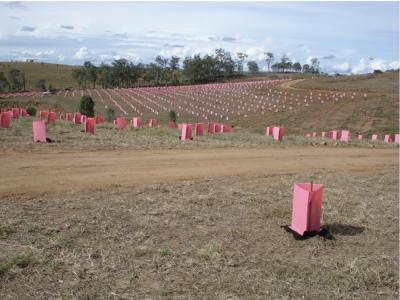Projects
Native Foresters was commissioned to conduct environmental assessments to support the detailed design and legislative application process for the 400 metre Park Road Boardwalk replacement between Little Cove and Mitti Street at Noosa Heads.
- Retention of habitat trees and Koala movement corridors was a key element in the brief.
- Baseline fauna and flora surveys and habitat assessments of the construction corridor were conducted and inputted into the design process for this iconic coastal walkway project.
- During construction in 2018, Native Foresters provided environmental services including Fauna spotter catchers and revegetation and arboricultural advice to Hutchinsons Builders who undertook construction of the project.
Native Foresters were engaged to conduct fauna surveys at a number of Environmental Reserves and Environmental Levy acquisitions across the Sunshine Coast region.
The surveys targeted mammals and reptiles within the reserves’ different habitat types, with a particular focus on koalas and species listed under the EPBC Act (1999) and NC Act (1992).
The survey methodology used was consistent with the Terrestrial Vertebrate Fauna Survey Guidelines for Queensland (DSITIA, 2012) and involved:
- Fauna trapping using Elliott traps, Herptile funnel traps, Harp traps and Camera traps;
- Microbat call detection and acoustic analysis;
- Opportunistic observations (active and passive search);
- Nocturnal spotlight surveys for reptiles / arboreal mammals;
- Comparisons of habitat condition pre and post fire;
- Comparisons of habitat condition pre and post wet season;
- Providing recommendations for reserve management, including threats and opportunities for conservation significant species.
Field surveys were conducted over five nights and six days by a specialised team of mammal and reptile specialists, bat specialists and ecologists and replicated each season (autumn and spring) over a period of two years.
Sites surveyed – Brannocks Ecological Reserve, Bobbie Sattler Ecological Reserve, Annie Hehir Environmental Reserve, Coochin Creek Environmental Reserve, Racecourse Road, Sippy Creek Road, Maleny Southern Wetlands.
A program of building renewal was undertaken at Mary Cairncross Scenic Reserve to upgrade the kiosk and visitor centre. It was important to honour the Deed of Trust under which the Reserve was gifted and minimise impacts on remnant rainforest outside the current built footprint.
Native Foresters was commissioned by Sunshine Coast Council to conduct fauna surveys and habitat assessments of the building precinct between 2012 and 2016 and prepare a Species Management Plan for Vulnerable listed Tusked frog.
The project was exemplary in environmental planning, delivery and compliance, with minimal impacts on Tusked frog habitat and remnant vegetation occurring during construction following implementation of the Species Monitoring Program.
Retention of existing vegetation; water quality monitoring of a Tusked frog breeding pond; fauna exclusion fencing and fauna relocations were incorporated into the project’s Environmental Management Plan to ensure minimal disturbance to fauna populations and their habitat during the construction phase.
The construction phase of the project was completed in January 2017, with ongoing monitoring of Tusked frog populations in accordance with the SMP until January 2018.
Native Foresters was commissioned by QPWS to conduct preliminary assessments of the fauna and flora species occurring within the footprint of proposed bridge upgrade works at Jimna-Bellthorpe Road and Bundaroo Creek bridge, with a particular focus on EVNT listed species.
These projects involved:
- Identification of fauna and flora in the footprint of proposed works.
- Identification of hollow-bearing habitat trees with diameter at breast height over 300mm.
- Assessment of the vegetation communities present on site.
- Identification of EVNT listed flora species occurring on the site or within the sites 100 metre buffer zone.
- Identification of key fauna and flora species interactions including Bell Miner Associated Dieback.
- Water quality monitoring before and after construction.
Upon finding a Southern Myotis bat colony in the bridge at Bundaroo Creek, Native Foresters provided for ongoing species management, impact mitigation, and relocation of the colony prior to works.
Native Foresters was engaged to assist local council bodies with proposals to expand the Nambour, Noosa and Buderim Landfill facilities. Native Foresters assembled multi-disclipinary teams to assess the construction, design, engineering, planning, environmental and cultural constraints on the projects.
Landfill expansion projects were assessed against the relevant provisions of the Vegetation Management Act, Nature Conservation Act and Environmental Protection and Biodiversity Conservation Act, State Planning Regulatory Provisions for Koala, as well as the Sunshine Coast Planning Scheme, including self assessable codes and exemptions under the Sustainable Planning Act 2009 and Regulations. The assessments included:
- Significant Residual Impacts on Matters of State Environmental Significance;
- Federal EPBC Act Referrals for Matters of National Environmental Significance;
- Assessment of Impacts on Groundwater Dependent Ecosystems;
- Species management programs for iconic, colonial breeding or special least concern animals (microbats, platypus and echidna)
- Species management programs for EVNT-listed fauna species (Tusked frog and Richmond Birdwing butterfly).
- Offset receiving site suitability assessment and Terrestrial Habitat Quality Assessment
This project involved a pre-development survey for a bike path near a peri-urban road reserve in Eumundi.
Significant populations of Vulnerable and Near-threatened plants (Maroochy nut, Richmond Birdwing vine and Toothed kamala), as well as core breeding habitat for the Richmond Birdwing Butterfly and Pink Underwing moth were identified during the flora survey. The bikepath alignment was designed to minimise impacts on these species and on the riparian habitats of the North Maroochy River.
Native Foresters surveyed the construction corridor of a proposed boardwalk that traverses the Bli Bli Environmental Park and the Descendants of the Australian South Sea Islanders (DASSI) Cultural Land, at the end of Whistler Street, Bli Bli.
The survey habitats included remnant tidal wetland associations growing below highest astronomical tide. These saline sedgelands and grasslands, mangrove communities and Swamp she-oak woodlands allow the movement of fauna along both tidal and non-tidal wetland areas and contain core habitat for conservation-significant species, including the Vulnerable-listed Water mouse (Xeromys myoides).
In addition to its ecological value, the site, including the old cane locomotive track, pylons and footings of old water structures and dwellings, and vegetation is of significant cultural value to the DASSI people, to whom it is known as ‘the old place’.
The original 2017 alignment over the locomotive track was subsequently revised in 2019 and moved slightly northwards, to exploit the unvegetated mud flats and existing gaps in the vegetation immediately adjacent to the locomotive track. This resulted in significantly less clearing of marine plants and avoided direct impacts to sensitive fauna habitat and areas of local cultural heritage.
The intent of the project was to educate and raise community awareness about the cultural, historical and ecological significance of the site through the use of interpretive signage and by facilitated access along a boardwalk.
As part of the Jessica Pond Remediation Project, Native Foresters was commissioned by Bligh Tanner Engineers to conduct a fauna and flora survey of the waterbody areas around Jessica Park, Minyama and prepare a Fauna and Flora Construction Management Plan.
The Fauna and Flora Construction Management Plan enabled the client to:
- Assess the fauna and flora which were likely to be impacted in the conduct of pond remediation works.
- Incorporate fauna habitat values into the redesign of waterbody areas.
- Select and implement mitigation measures and procedures to ensure that impacts on native species were minimised and/or avoided.
- Understand the specific minimum requirements for monitoring, reporting and review of the Construction Management Program.
- Undertake Sunshine Coast Councils Environmental Screening Process in order to determine any environmental factors relevant to the project.
Native Foresters was commissioned by Sunshine Coast Council to undertake a program of street planting and landscaping.
This project involved the supply, planting and ongoing maintenance of both advanced growth street trees as well as native tubestock. A planting plan was designed in co-operation with Landscape designers from SCC and successfully implemented with resultant improvements in the local street amenity.
Native vegetation along the north and south channels of Sippy Creek was restored through an extensive riparian and wetland planting of 160,000 native tubestocks.
This project was a prize winner at Sunshine Coast Environment Awards 2007. Revegetation of five native ecosystem types was undertaken as part of the rehabilitation of Sippy Creek at Sippy Downs. Remnant vegetation was retained onsite as were habitat features for native fauna species.
Native Foresters in collaboration with GRC Officers developed a Planting Plan for the Rainbow Beach Sewage Treatment Plan.
The site’s topography was retained and the site was de-watered with the outlet pipe lowered in order to increase the potential planting area onsite. This resulted in a planting area of approximately 7,200m2 with planting rows following the contours of the site.
An analysis of the site determined that the adjacent remnant vegetation was Regional Ecosystem 12.2.7: Melaleuca quinquenervia open forest on sand plains. Based on the composition of this RE type, 1,500 Paperbark tea trees (Melalueca quinquernervia), Queensland Blue Gum (Eucalyptus tereticornis) and Swamp banksia (Banksia robur) were used in the planting.
All existing native vegetation on the site was retained and incorporated into the revegetation works.
Native Foresters was commissioned to prepare a Weed Management Plan (WMP) and Rehabilitation Plan (RP) within the footprint of a proposed caravan park upgrade.
Queensland Government declared pest species, weeds of national significance and species on the National Environmental Alert List were subject to this plan as well as all local habitat-changing species. The plan addressed works and actions required to achieve compliance with the Sunshine Coast Regional Council’s Biodiversity Strategy 2010-2020 and Waterways and Coastal Management Strategy 2011-2021.
The aims of this project were to:
- Provide a plan for the control of environmental and habitat-changing weeds prior to site redevelopment in April 2016.
- Provide a plan for ongoing management of weeds on site to protect the biodiversity and ecosystem values of adjacent bushland and drainage lines beyond construction.
- Provide a rehabilitation plan to revegetate disturbed areas, with a particular focus on perimeter areas that adjoin existing remnant vegetation.
Following a flora and fauna survey of an area of remnant native vegetation in Traill Park, Maroochydore where vulnerable-listed Tusked Frog (Adelotus brevis) was found, it was determined that the site contained breeding habitat for the species.
A Species Management Plan was prepared for the Queensland Department of Environment and Heritage Protection in order to mitigate potential impacts on this breeding habitat as a result of clearing, construction and road widening works and to seek the required approval from EHP to tamper with their breeding places. A number of impact mitigation measures were recommended.











